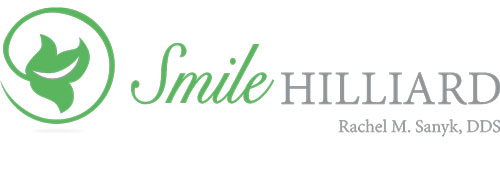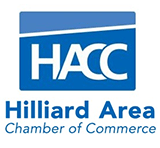When it comes to maintaining optimal dental health, there are instances where tooth extraction becomes a necessary procedure. Whether it is caused by severe decay, gum disease, or the presence of impacted wisdom teeth, dental extractions are procedures that aid in improving oral health and preventing further complications. In the event that dental extraction is needed, it is crucial to clearly understand what to anticipate before, during, and after the procedure. In this blog, we will delve into the intricacies of dental extractions, from comprehending the extraction process to post-operative care and potential replacement options for missing teeth.
What is a Dental Extraction?
An extraction is the removal of a tooth from the jawbone socket, but this procedure is anything but basic. Extreme care is taken at every step of the process to ensure your comfort, avoid complications, and facilitate fast healing. This starts with a discussion about the procedure, what it entails, the risks and benefits, possible complications, and alternatives to this care. We also review your medical history and the medications that you are taking to make sure the procedure will be safe for you.
At Smile Hilliard, our experienced dentists perform dental extractions very carefully. First, local anesthesia is administered to get the tooth and surrounding areas numb. During the extraction, Dr. Sanyk follows the philosophy that every tooth is different and every tooth is removed in a unique way. This may require creating a small incision to expose the tooth or removing some of the bone around it. In any case, you can be sure that all aspects of care and caution are taken during your procedure. In addition, Dr. Sanyk encourages each patient to communicate any concerns, questions, and/or discomfort they may be feeling so that she can address them prior to proceeding.
After the procedure is completed, we encourage patients to sit and relax for a few moments. We take this time to provide detailed instructions on post-operative care, including proper oral hygiene, pain management, and any necessary follow-up appointments.
As stated previously, dental extractions are not basic or “easy” procedures. Thus, there are some instances where it is in the patient’s best interest to see an oral surgeon for their care. This can be due to the need for medication management, a higher risk for complications, or the patient’s desire for sedation.
Understanding the reasons behind the extraction and any potential risks associated with the procedure is essential. At Smile Hilliard, Dr. Sanyk and our dental team are committed to providing you with the best possible care throughout dental extraction.
General Advice for Optimal Recovery
After a dental extraction, the team at Smile Hilliard will provide detailed post-operative instructions to guide a patient’s recovery process. Patients must follow these guidelines to ensure optimal healing and minimize the risk of complications.
Managing Post-Operative Discomfort
Effective pain management is a crucial component of proper post-extraction care. Some discomfort and swelling are expected following a dental extraction; however, some strategies can be employed to manage these symptoms effectively. In general, ice packs may be used to decrease swelling. Some medications, such as Ibuprofen, are used to reduce inflammation. As dental professionals, it is essential to prioritize the well-being of our patients by providing comprehensive post-extraction instructions that include guidance on managing pain and swelling. By offering compassionate care and support, we help your patients feel more comfortable and confident throughout the healing process.
Post-Operative Instructions for Patients
There are many standards to follow to ensure the least amount of discomfort and the most successful healing of an extraction site. One helpful step is to rinse gently with warm salt water several times a day. This sounds like an old wives’ tale, but it actually promotes healing and keeps the extraction site clean. This practice should start the day after the procedure and is completed by mixing half a teaspoon of salt in eight ounces of warm water and swishing it around your mouth, avoiding any vigorous rinsing or spitting.
The blood clot that forms in the socket is essential for proper healing and to avoid complications like dry socket. Therefore, it is crucial to avoid touching the extraction site with your tongue, fingers, or any foreign objects to protect the blood clot and promote proper healing. This includes any small bits of food, so it is generally expected to eat soft foods for the first few days. It is also important to avoid things that may make the blood clot move or shift. Pressure changes can do this, so patients must avoid smoking, using a straw, or lifting heavy objects.
In the days following an extraction, it is crucial to keep the extraction site clean. As stated above, warm salt water rinses work well, but gentle brushing can begin on the second or third day. Of course, normal oral hygiene of the other teeth in the mouth is important to rid the oral environment of bacteria that may disrupt the healing process.
Finally, attending follow-up appointments as scheduled is vital for monitoring healing, addressing any concerns, and providing general dentistry care. Of course, if any unexpected symptoms or complications arise, don’t hesitate to contact Smile Hilliard immediately. Adhering to these general recommendations professionally will facilitate a successful recovery and contribute to overall oral health.
What are Some Replacement Options for Missing Teeth?
Ideally, a discussion on the options to replace a missing tooth occurs prior to the extraction procedure. This way, the patient has a plan to move forward without the anxiety and fear of what to do next. Some common options for replacing lost teeth comprise dental implants, dental bridges, and partial dentures. For each of these options, the extraction site needs time to heal, which, in turn, gives the patient time to consider the options. Each option has aesthetic and functionality pros and cons that must be evaluated for what the patient desires for their smile. It is imperative to consult with Dr. Sanyk to determine the most suitable replacement option for your individual needs.
Relieve Pain, Restore Comfort – Expert Dental Extractions for a Healthier Smile
At Smile Hilliard, we understand that dental extractions may be necessary for various reasons, such as tooth decay, gum disease, or overcrowding. We also understand that there are many aspects of this procedure to consider with each patient. That’s why Dr. Sanyk takes the time to thoroughly discuss everything from your health history and medications to your replacement options all in a stress-free and non-judgemental environment. We pride ourselves on your comfort during all procedures and ensure that you receive the best care possible.
No one wakes up in the morning and says “I think I’ll get a tooth extracted today,” but at Smile Hilliard, we know that it is sometimes the best option for your overall oral health. If you’re concerned about the possibility of an extraction and would like to discuss your options, don’t hesitate to contact us for complete guidance throughout the process.






